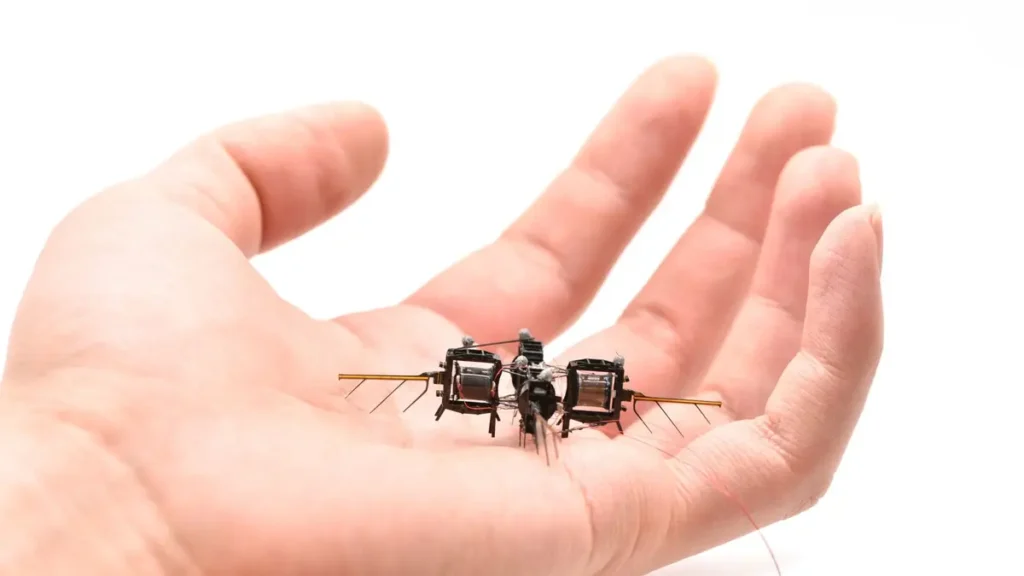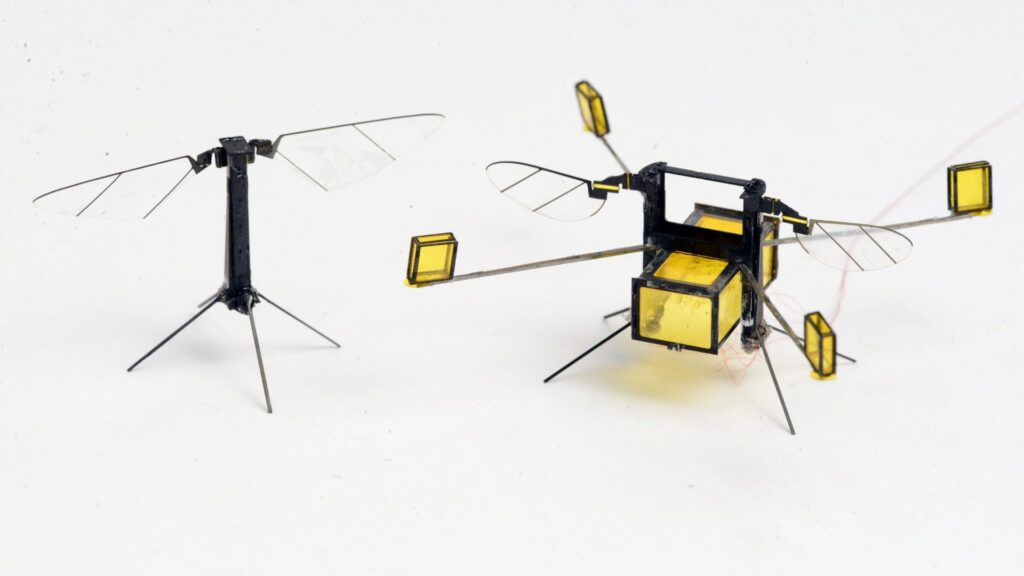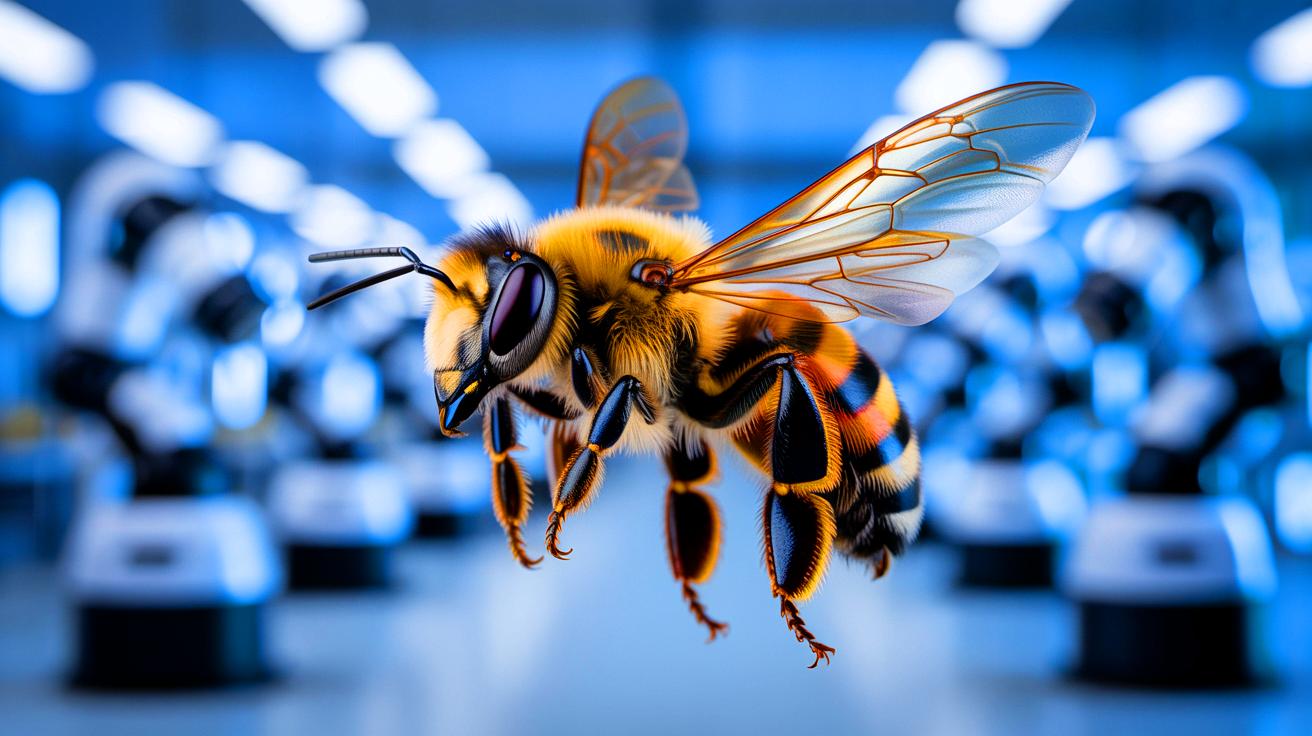In the ever evolving landscape of artificial intelligence (AI) and robotics, nature continues to be humanity’s most brilliant teacher. Despite all our technological advancements, the natural world often presents us with puzzles that redefine how we think about machines, perception, and learning. One of the latest such revelations comes from an unlikely yet fascinating source the humble bee. Researchers now believe that bees’ hidden learning trick may hold the key to revolutionizing how robots see and interact with their environment.
The Fascinating World of Bees’ Hidden Learning Trick
Bees often celebrated for their role in pollination and honey production, possess a surprisingly sophisticated cognitive system. Their brains roughly the size of a sesame seed, perform complex tasks that rival some of our most advanced AI systems. The recent work from scientists at the University of Sheffield has peeled back another layer of this mystery, demonstrating how bees’ hidden learning trick could inspire entirely new ways for robots to perceive and process visual information.
Unlike most AI systems that passively collect data from their surroundings, bees actively shape their visual experience through deliberate flight patterns and movements. They don’t simply fly from flower to flower haphazardly instead, they use specific maneuvers to optimize how they gather visual cues. This ability to influence their own perception is what makes their learning trick so powerful and so appealing to researchers trying to enhance robotics.
Why Bees’ Hidden Learning Trick Is a Game Changer for Robotics
Traditional robots rely heavily on fixed sensors and pre-programmed algorithms to navigate their environment. While effective to an extent, this approach often falls short in complex, unpredictable settings. That’s where insights from bees’ hidden learning trick come in.
By mimicking the active learning approach of bees, engineers can design robots that adapt their perception in real time. Imagine drones or autonomous vehicles capable of adjusting their movements to gain better visual input, just like bees do when approaching a flower or navigating through dense foliage. Such advancements could significantly improve robot efficiency in tasks ranging from search and rescue to warehouse automation.

The Science Behind Bees’ Hidden Learning Trick
At the core of this breakthrough lies an understanding of how bees process visual information. Through controlled experiments and computational modeling, researchers discovered that bees don’t rely solely on static vision. Instead, they create their own opportunities for learning by moving strategically, thereby gathering richer, more informative visual data.
Scientists at the University of Sheffield built computational models that simulate the bee brain and its learning processes. These models revealed that bees’ hidden learning trick isn’t just about instinct it’s a learned behavior optimized through experience. In other words, bees get better at seeing and understanding their world over time, refining their flight patterns to enhance their perception.
For robotics, this insight is revolutionary. It suggests that machines can also be designed to learn not just passively but actively, adjusting their sensory behaviors to maximize understanding.
Bees’ Hidden Learning Trick and AI: Beyond Pattern Recognition
The implications of bees’ hidden learning trick extend far beyond robotics. In the realm of AI especially in pattern recognition and machine vision, bees’ approach introduces a dynamic element often missing in current models.
Most AI vision systems are static they process data from cameras or sensors without actively influencing the information they receive. Bees demonstrate that perception is a two way street. By incorporating movement and environmental interaction, AI can evolve from being reactive to being proactive, enhancing both learning speed and accuracy.
Applications of this could be seen in fields as diverse as autonomous vehicles robotic surgery, and even planetary exploration. Imagine a Mars rover capable of adjusting its sensors and movement in real time to navigate unknown terrain more effectively all thanks to a lesson learned from bees.
Nature Continues to Outsmart Us But We’re Learning
The brilliance of bees’ hidden learning trick underscores a humbling truth: nature continues to outsmart us in ways we are only beginning to understand. Yet, it also highlights our ability to learn from these natural marvels and apply their wisdom to human innovation.
For centuries, humans have drawn inspiration from the natural world from birds inspiring flight to the structure of whale fins influencing wind turbine design. Bees now join this prestigious list, showing us that even the tiniest creatures hold secrets that can reshape our technological future.
By embracing bees’ hidden learning trick, researchers and engineers can build machines that not only see but learn, adapt, and improve in ways that mirror the complexity of life itself.

How Bees’ Hidden Learning Trick Could Shape the Future
The study of bees’ hidden learning trick is more than a scientific curiosity it represents a paradigm shift in how we approach machine learning, robotics, and AI. By looking to nature’s smallest engineers, we are unlocking new pathways to smarter, more adaptive technologies.
As research progresses, expect to see these principles woven into the next generation of autonomous drones, robots, and AI driven systems. From complex industrial environments to delicate surgical procedures, machines that learn like bees could soon be making our world safer, more efficient, and more intelligent.
Indeed! they’ve outsmarted us again but this time, we’re smart enough to follow their lead.


1 thought on “Bees’ Hidden Learning Trick Could Revolutionize How Robots See and Learn Nature’s Secret Behind Smarter AI”